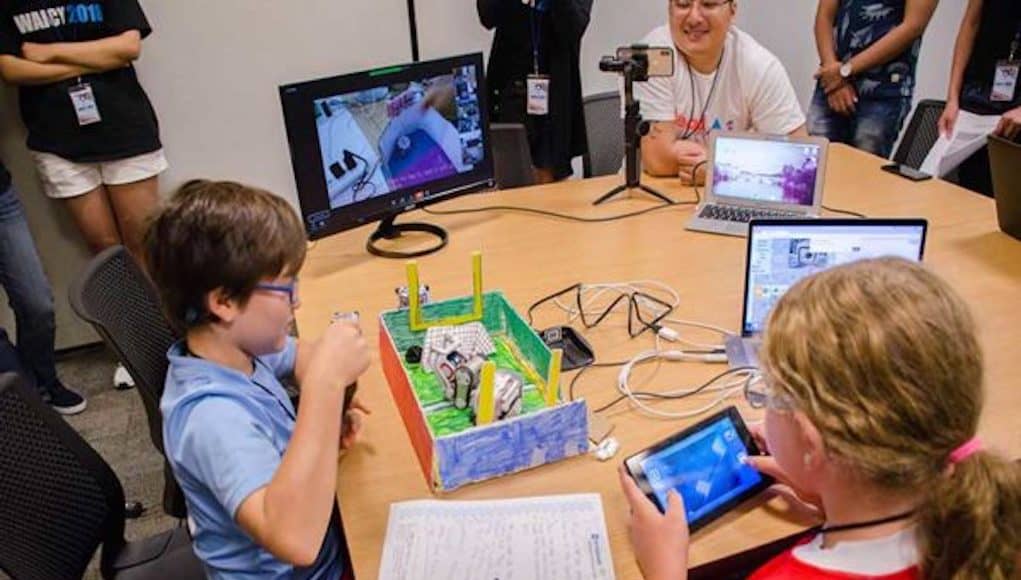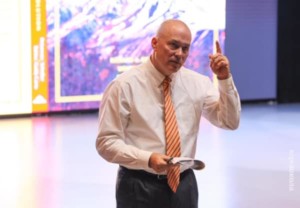Commentary: In Our Changing Economy, We Need New Flexible Education Systems to Usher in an Age of Agility for Tomorrow’s Workforce

By: Tom Vander Ark, Cheryl A. Oldham and Tim Taylor
Recently, Pathway 2 Tomorrow: Local Visions for America’s Future (P2T) announced the winners of its $100,000 Innovation Award for bold, transformative education solutions. One theme that emerged from among the 240 stakeholders who submitted proposals involves disrupting the traditional education pathway — redesigning the intersection between education and workforce preparation cohesively, across all segments of education, to be agile and responsive to communities and prepare students to succeed in a time of changing economic demands.
This theme directly aligns with what we at the U.S. Chamber of Commerce Foundation, America Succeeds, and Getting Smart have termed the Age of Agility, a commitment to forging a system that is agile and adaptable, to capitalize on progress for all students, and to developing new ways to prepare them to be successful in an ever-changing world.
In the fall of 2017, America Succeeds released a report, Age of Agility: Education Pathways for the Future of Work, to call attention to the seismic shifts underway in education-to-employment pathways. As a society, we are in the early stages of a rapidly accelerating revolution that is bringing automation, artificial intelligence, and technology into parts of the workforce that have, until now, escaped this latest wave of disruptive change. Professional services such as bookkeeping, radiology, and legal aid are quickly joining the list of impacted industries we are more familiar with, like manufacturing, retail, hospitality, and logistics.
As the report says, “The bottom line is straightforward: if students and workers must be agile and adaptable to succeed in this new world, then the same holds true for the education system that prepares them.” In many cases, that means calling for a radical transformation of education-to-employment pathways.
Nine months ago, America Succeeds and the Chamber Foundation partnered with P2T on its effort while undertaking one of our own: the Age of Agility Tour. We undertook a multi-city listening tour to hear from business, education, and policy leaders on the ground and learn how crowdsourced innovative solutions are aimed at closing the growing skills gap within their states. The tour launched in 2018 with an event in Arizona, then continued to Kansas, Missouri, New Mexico, Illinois, Tennessee, Oklahoma, Idaho, Arkansas, and New Jersey. The tour is wrapping up with a final Washington, D.C., event, in partnership with Getting Smart, on Jan. 24.
The goal of each summit has been to inspire attendees with new models and promising practices to prepare students for the future locally, while encouraging participation in the broader discussion about scaling these educational opportunities to all students. So far, more than 1,000 attendees and five governors’ offices have participated in the tour, eager to confront the challenges and champion the solutions presented.
We are seeing similar pushes and pulls on the current education system, and suggestions for places to focus on moving forward, from both our summits and the proposals submitted by P2T stakeholders. Ideas surfaced through P2T present a variety of innovative action plans around disrupting traditional education pathways, and the alignment and partnership with other organizations offers the most intriguing opportunities for significant impact in the future.
The most significant momentum is building around the idea of redesigning the intersection between education and workforce preparation across the education system. Flexibility is critical for learners, educators, and the system’s structures to adapt and respond to the changing needs of communities and the modern, global economy. The education system has to be framed with the agility to prepare students for the world of the future.
Across the national tour, we often share this quote from Jaime Casap, chief education evangelist at Google: “We need to be preparing kids for jobs that don’t exist and to use technologies, sciences, and methods that we haven’t even discovered yet, to solve problems we haven’t identified.”
While there is still much work to do on building consensus for the strategies and tactics to create an agile education system, the urgency of addressing this issue is hard to ignore. States, communities, companies, and millions of workers are already starting to feel the impacts of this latest workforce revolution. Policymakers from both sides of the aisle are confronting economic uncertainty and a desire to protect jobs — and our community has a rare opportunity to ensure that these conversations and concerns are linked to efforts to modernize education.
As our Age of Agility Tour wraps up in Washington, let’s focus on how we can work together to make it better in the future. Let’s find ways to collaborate across organizations and across the country to take on these new challenges. Let’s start building a system designed for the Age of Agility.
For more, see:
- Reading List: Nine Smart Books on Artificial Intelligence
- Envisioning the Future of Education and Jobs
- Let’s Make Sure America Succeeds in the Age of Agility
This post is a part of the Getting Smart Future of Work Campaign. The future of work will bring new challenges and cause us to shift how we think about jobs and employability—so what does this mean for teaching and learning? In our exploration of the #FutureOfWork, sponsored by eduInnovation and powered by Getting Smart, we dive into what’s happening, what’s coming and how schools might prepare. For more, follow #futureofwork and visit our Future of Work page.
This was originally posted on The 74.
Cheryl Oldham is senior vice president, Center for Education and Workforce, U.S. Chamber of Commerce Foundation. Tim Taylor is president and co-founder of America Succeeds.
Stay in-the-know with innovations in learning by signing up for the weekly Smart Update.








divya jain
Yes our education system is changing. But still due to overpopulation people are not able to get a job. Hence some changes should be made. After doing engineering many people are not able to get a job due to lack of experience. I was one of them. But then I heard about internship. It is a practical training for the job which acts as a stair between the qualification and job. I did my internship and soon got a job.
You can also look in for the help of sites such as indeed(dot)com, naukri(dot)com, wayup(dot)com and https://www.mychatri.com/ . These are of great help.